If you were to walk past my garden and do a bit of eavesdropping at the height of summer, you would no doubt think you happened upon a scene from Alice in Wonderland. You’ll hear me shout “Off with their heads!” at a volume rivaling that of The Queen of Hearts. But rest assured, I’m not seething with rage; I’m just deadheading flowers.
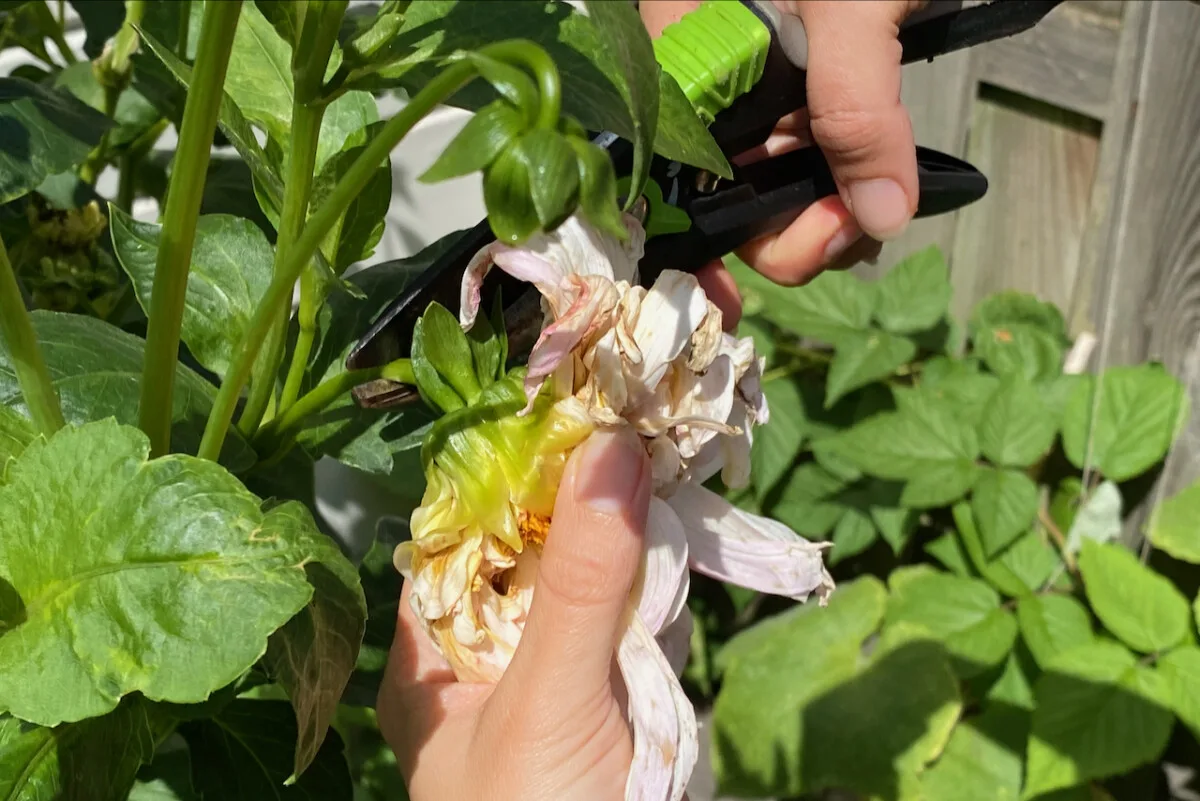
Removing the spent blooms on both perennial and annual flowers is an excellent practice for several reasons. It encourages our plants to put out more flowers; it extends the blooming season; and it helps the garden look aesthetically pleasing without too much extra effort.
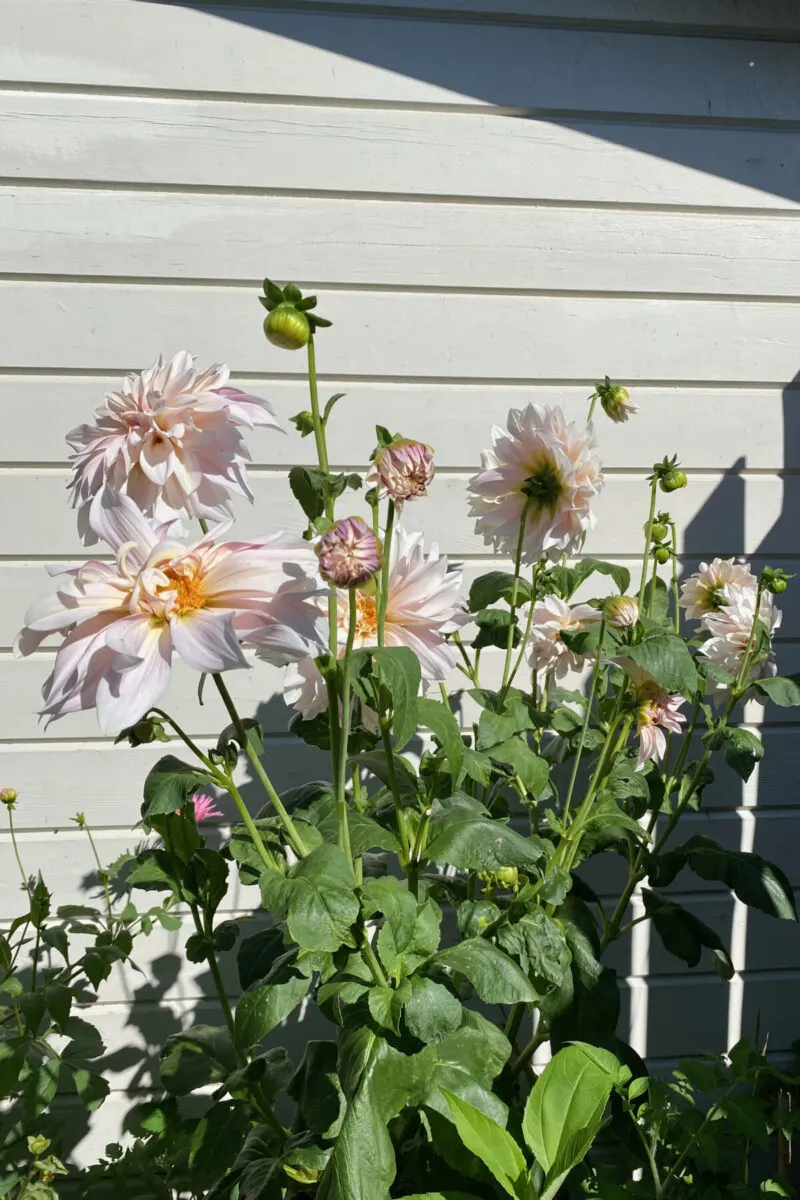
In the spirit of the contrarian Queen of Hearts, allow me to explore a few reasons why we shouldn’t deadhead the flowers in your garden. Most of these reasons are excellent reminders now, at the end of summer, with colder weather looming. But some of these scenarios also apply to plants that reach their peak in May, June or July.
1. Some plants won’t bloom again after deadheading.
Speaking of plants that peak earlier in the year, let’s have a look at why deadheading may be a bad idea. Take perennials such as rhododendrons, azaleas, camellias and magnolias. These shrubs form their buds months (even seasons) in advance.
For example, the beautiful rhododendron flowers that open up around May have been forming on the plant since the previous May or June. We can deadhead our rhododendrons to make them look tidier – here’s how I cleaned them up in June.
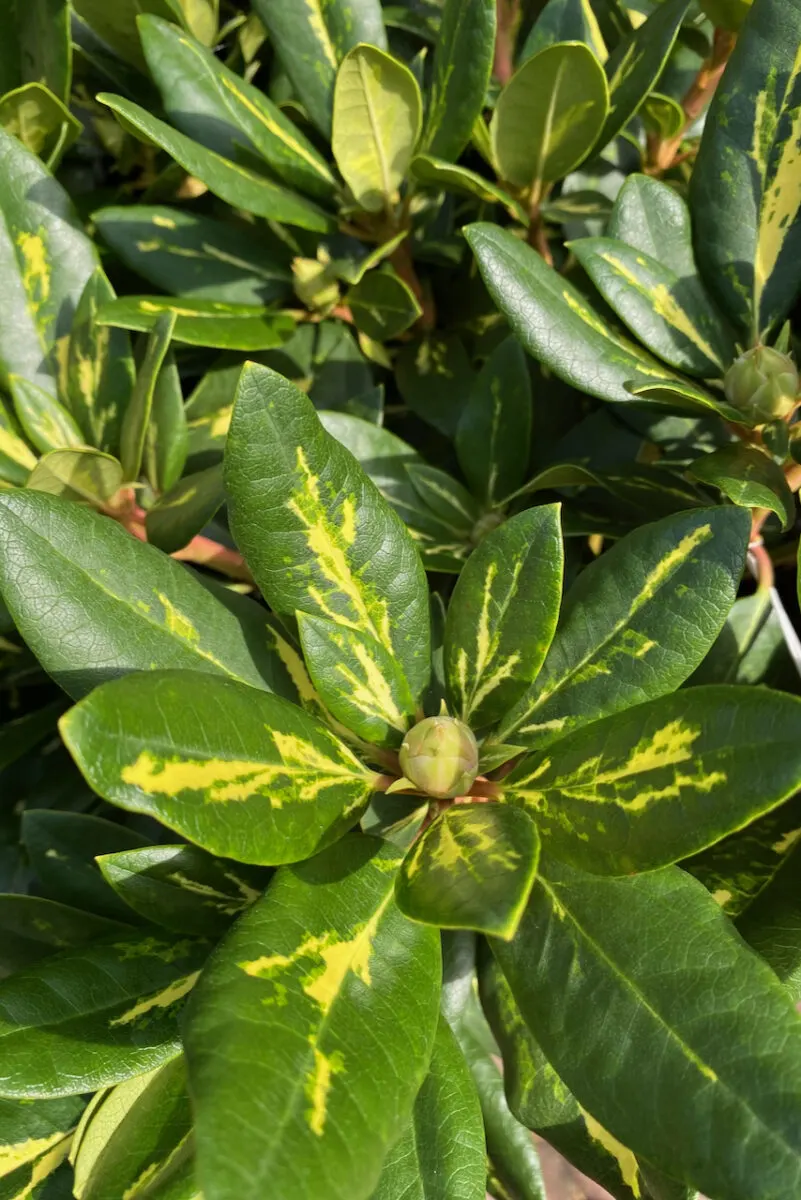
However, doing so in the hope of encouraging the plant to put out more blooms is an exercise in futility. Deadheading helps the shrub not waste energy on seed production, but we can put this gardening job on the back burner until all the blooms are spent.
It’s not just shrubs that only bloom once. Ornamentals such as Russian sage, Siberian irises, astilbe and tall sedum will generally not bloom again once you’ve deadheaded them.
2. You want the plant to self-seed.
Admittedly, for some of our readers that’s precisely the main reason why deadheading should take place. I agree, to a certain extent, that if you have an established plant colonizing the four corners of your garden through self-seeding every year, then off with its head! is the best approach.
But I also see self-seeding as sparing me the effort of trying to propagate that plant, especially if that plant is an annual, such as nigella and calendula. Self-seeding allows me to sit back and do nothing yet still get a beautiful patch of blooms next spring. Perennials, such as rudbeckia, lobelia and columbine, are good self-seeders too.
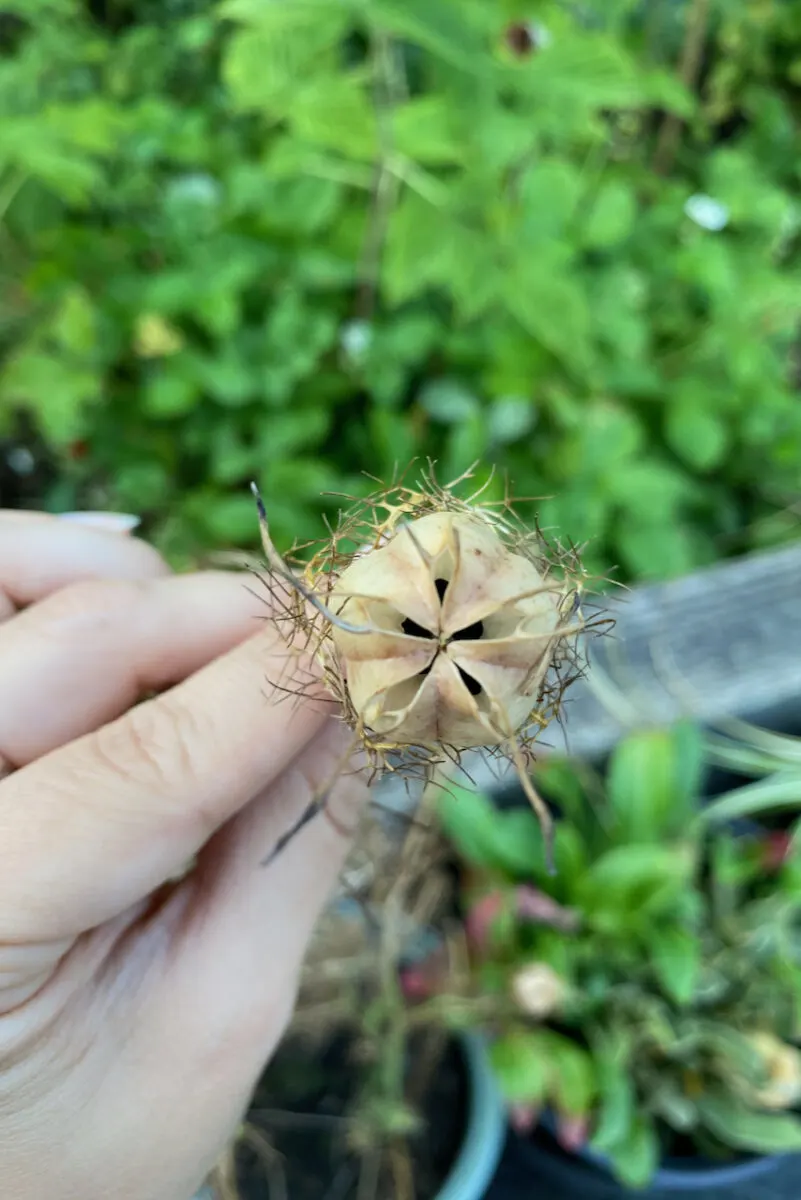
Some seeds need cold stratification in order to improve germination rates, so letting those plants self-seed in the fall usually gives me better results than starting them from seed in spring.
With biennials, such as foxgloves, hollyhocks, forget-me-nots and lunaria, the advantage of self-seeding is even more evident. Since biennials bloom in their second year, allowing them to spread their seeds every year ensures that you have flowers in bloom every year, instead of every other year.
Take Sweet William (Dianthus), for example, which grows as a biennial in my garden. It spends its first year with zero flowers, so you’d better believe I’m letting it go to seed next year.
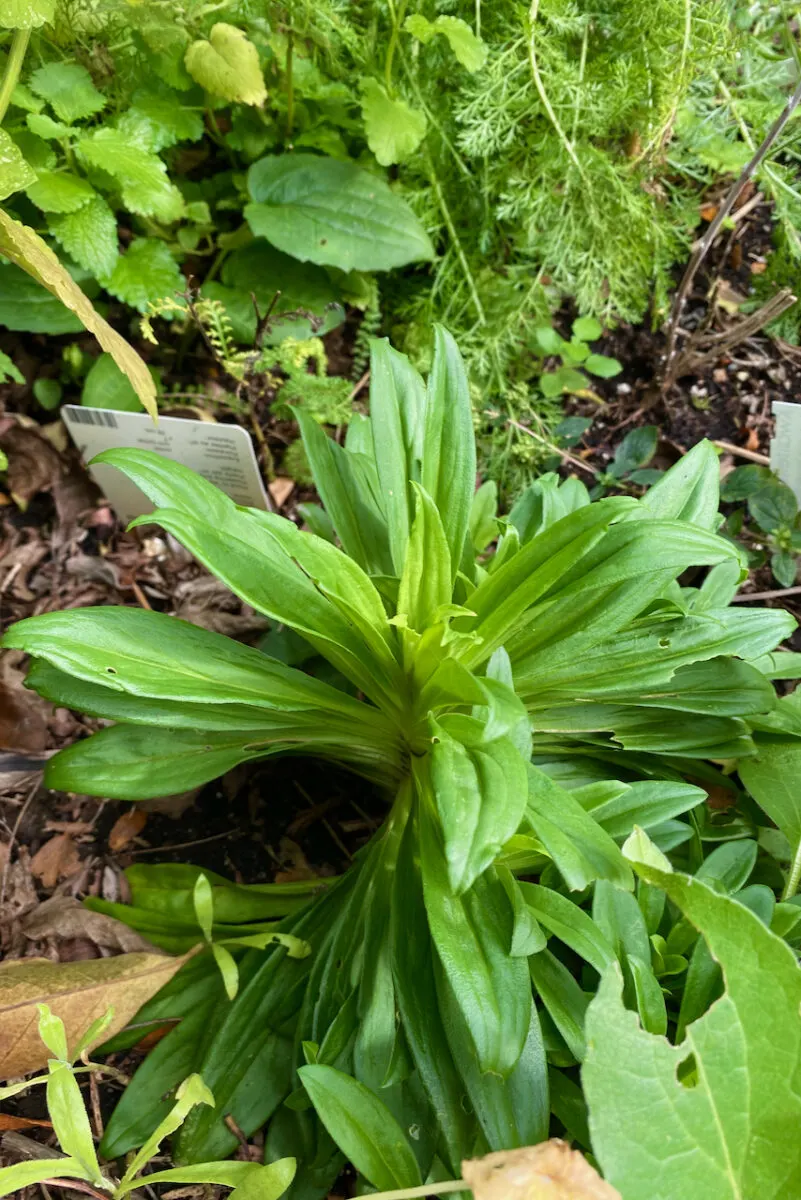
3. The seeds are edible (and delicious)
We often think of plants as either edible or ornamental. And if they are edible, surely it must be the fruit that we use in our cooking. But how about the seeds?
How often do we think of rosebuds as edible when we deadhead them in a happy frenzy to get more and more blooms? Not often, I’m willing to bet. If we don’t let the flower go to seed, we’ll miss out on deliciously tart rose hips full of vitamin C and antioxidants.
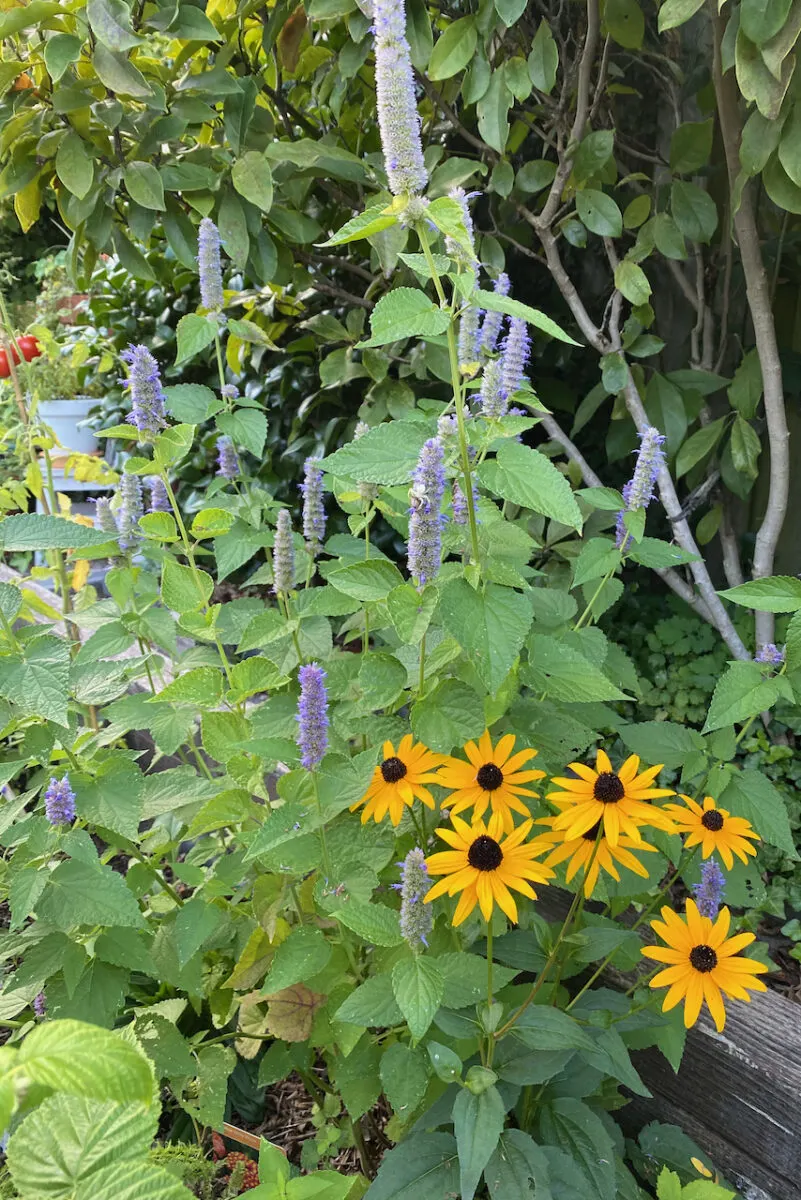
It’s not just roses that have edible seeds. Plants such as nasturtiums, anise hyssop, coriander, and fennel all have edible seeds. Have you ever tasted green coriander seeds? They pack all of that delicious Middle Eastern flavor with not even a hint of the soapiness of coriander leaves.
If you’re interested in exploring more edible seeds, here’s an article I wrote about this excellent cooking resource.
4. The seeds are edible for wildlife.
Let’s not be human-centered here. If we don’t deadhead and let our plants go to seed, we’ll have a garden full of life all winter long. Because it’s not just us consuming the seeds. Even if the seed heads are not edible for us, they are edible for wildlife.
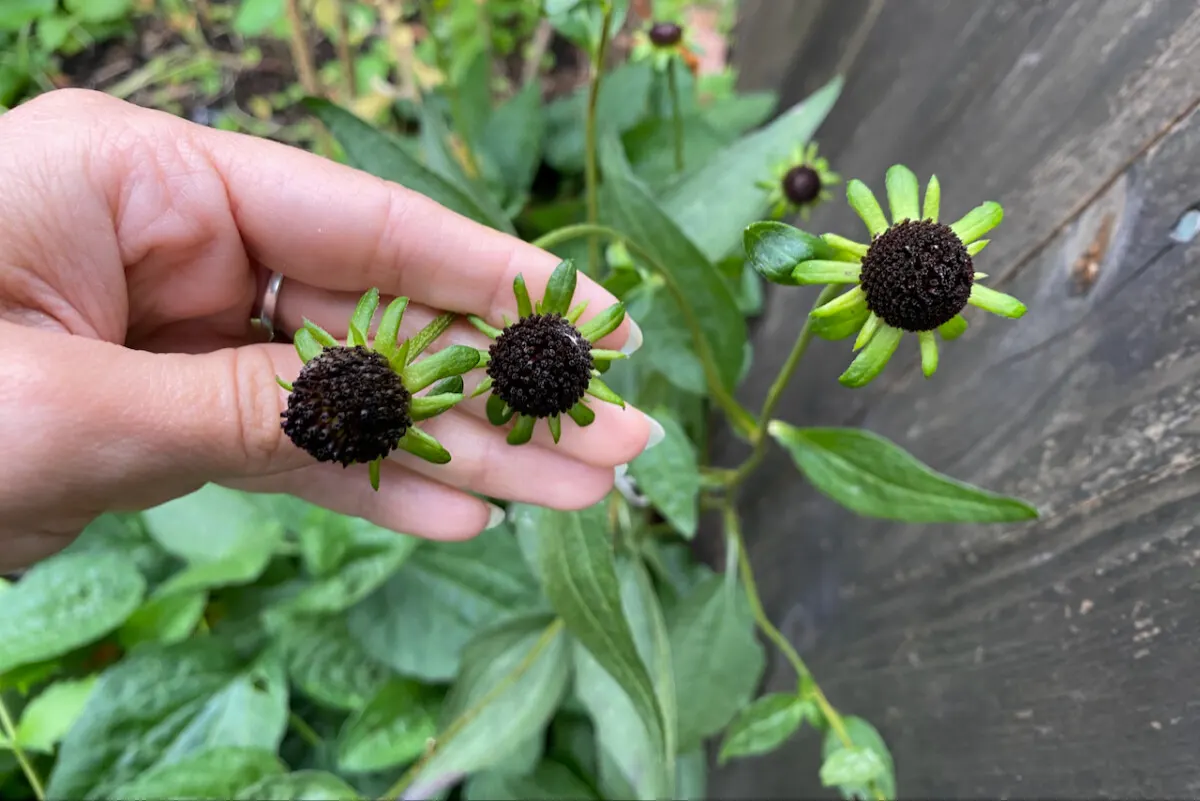
During the cold winter months, when their other food sources have run scarce or have retreated deeper underground, birds feed on the seeds of echinacea, black-eyed Susan, ox-eye flower and sunflowers.
Goldfinches, in particular, love to supplement their diet with the seeds of Sweet William in the winter months. Refraining from deadheading these sources of nourishment will ensure our gardens are welcoming places for much-needed wildlife.
5. The dead flower heads will add interest to your garden.
I admit, looking at dry flowerheads as ornamental elements in the garden does require a change in mindset. Often this shift doesn’t come suddenly, but gradually. And the shift starts when you just leave the flower heads on … just to see what happens. In more cases than you’d imagine, what happens is pure beauty.
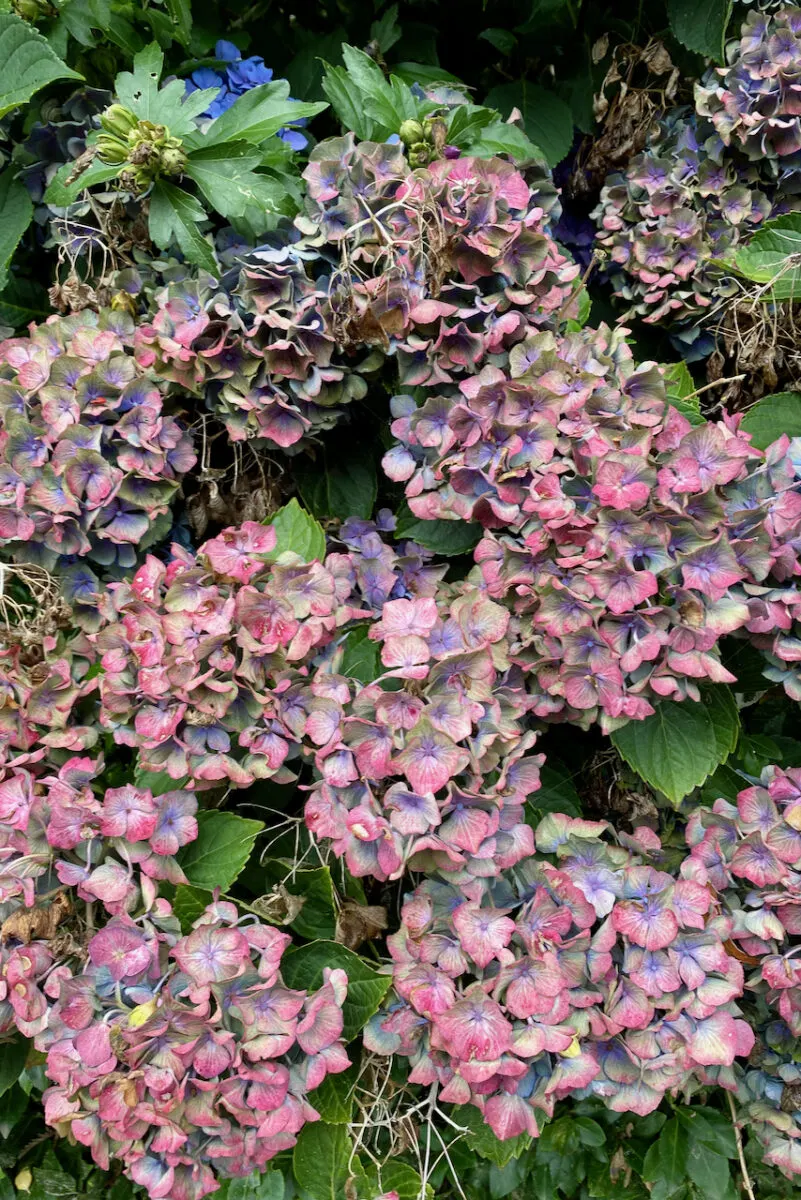
Take, for example, the richness and texture of dry hydrangea flowers overwintering in the garden. Deadheading them in the middle of the growing season would be such a loss later on in the year.
But it’s not just the winter garden that we can enhance by leaving flower heads to age in place. This year, I experimented with allowing some spring bulbs to transition into summer with the flowers still attached. Obviously, it didn’t work so well with the tulips or the crocuses. However, the daffodils and the muscari turned into perfect dry decor.
Here is how the dry muscari heads looked tucked next to my potted hydrangeas in mid-summer. I would have missed this gorgeous combo if I had decided to deadhead them once blooming was over.
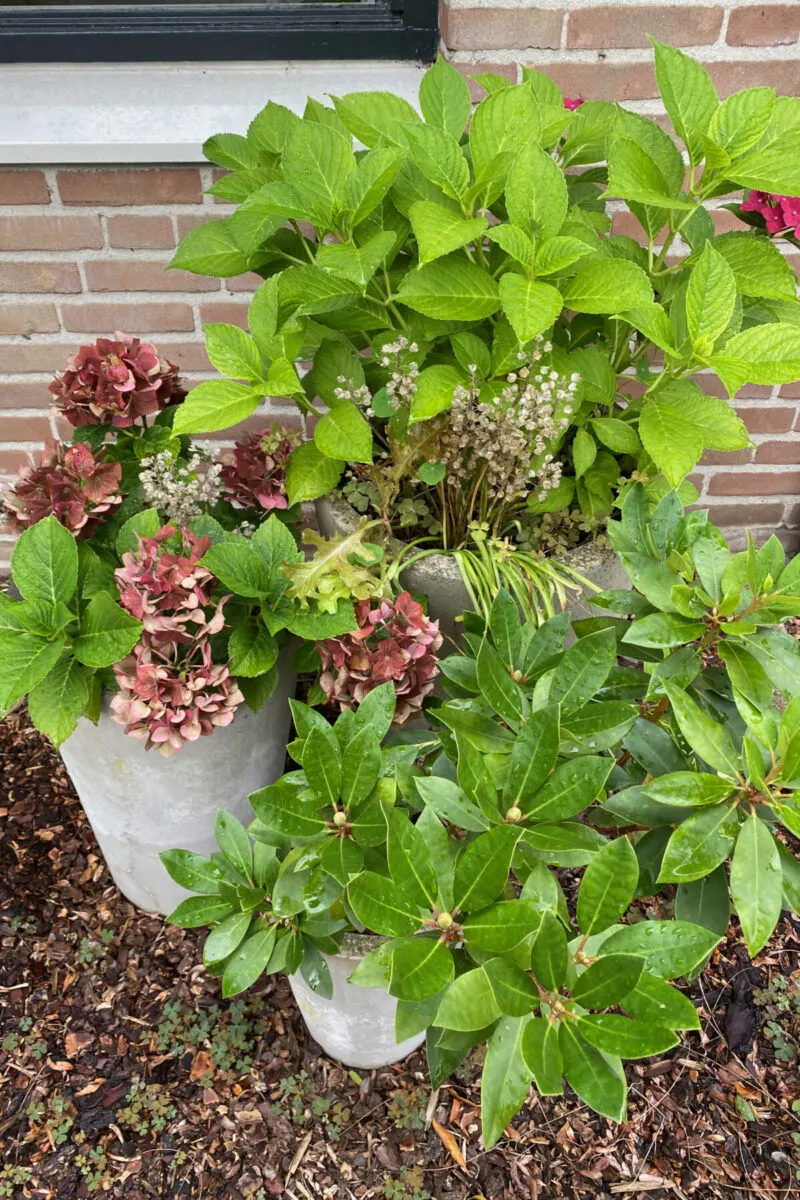
6. You want to dry the flowers.
Speaking of decor, there are some plants that we grow specifically for their beautiful dry blooms and ornamental seedheads. Plants such as silver dollars (Lunaria annua), celosia, Chinese lanterns (Physalis alkekengi), globe amaranth (Gomphrena globosa) and some ornamental grasses make beautiful flower arrangements when we dry them.
I challenge you to think outside the box and dry flowers that you wouldn’t normally grow for this purpose. I’ve made dry arrangements using anise hyssop, verbena bonariensis, rudbeckia, spirea, basil and even mustard pods. I’ve let all of these flowers dry on the stalk in the garden, which would not have been possible if I hadn’t stopped deadheading them.
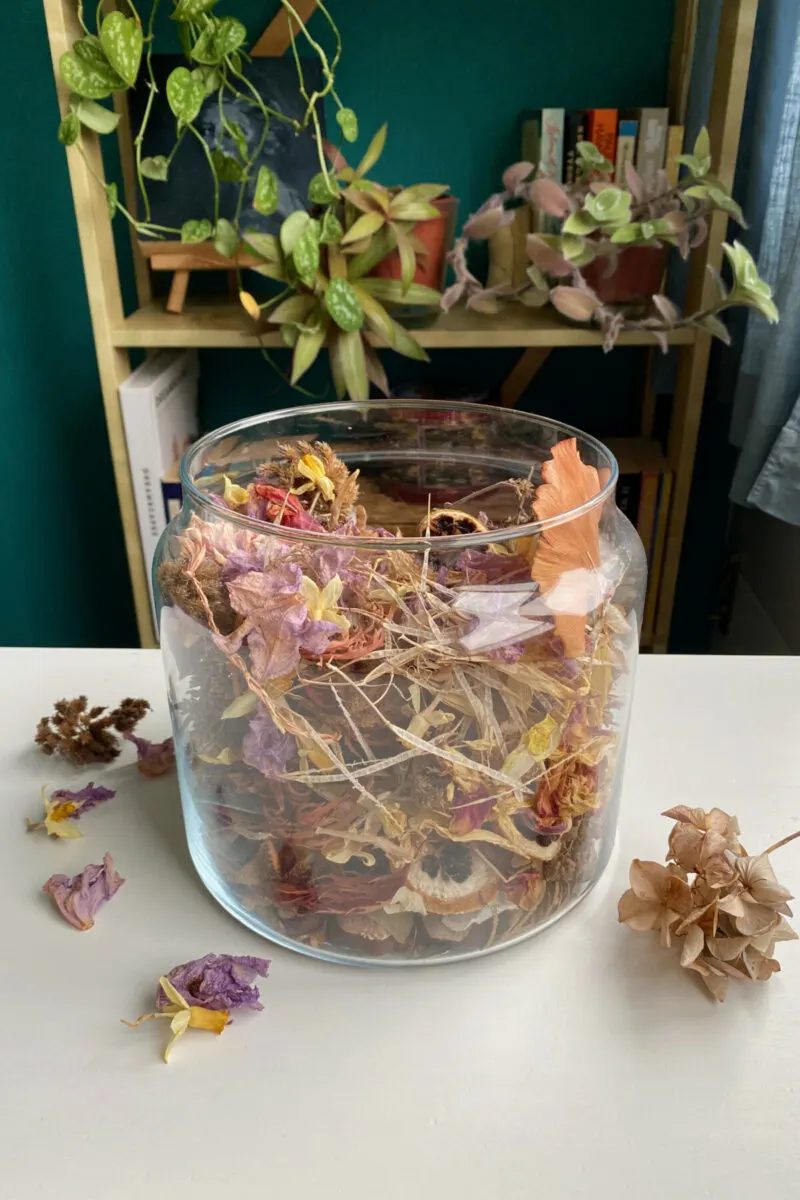
When I maxed out on the number of vases I could use for dead flower displays (since I wasn’t really after that Addams Family vibe), I switched to collecting the dry flower heads in an oversized glass jar. It’s free decor that takes up very little space but brings me a lot of joy.
7. You shouldn’t encourage new growth late in the season.
Let’s get back to those roses that I advised you to skip deadheading in order to collect the rose hips. Another reason why deadheading is not a good idea later in the season is because it encourages new growth. I wrote about this in the guide on essential fall care for roses.
It’s not just roses that can suffer if you deadhead them too late in the season. It’s best to leave tender perennials to go to seed starting in late summer. That’s sometimes a bit tricky. What’s considered a tender perennial in one gardening zone can be grown as an annual in a colder zone and a perennial in a warmer zone. However, a list of the most common tender perennials includes blanket flowers (Gaillardia), hostas, daylilies, lantana, astilbe, hibiscus and penstemons.
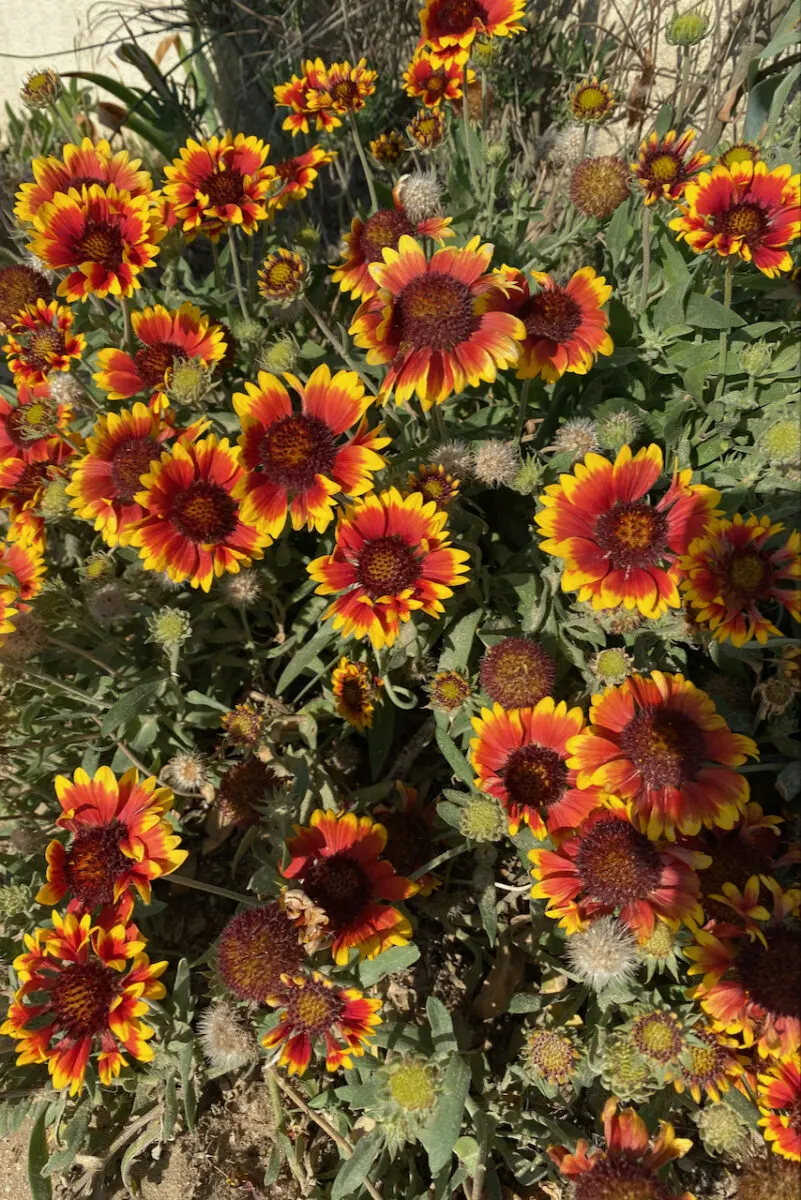
Depending on what type of climate you garden in, you might get your first frost as early as October. That’s why you want to encourage tender perennials to enter their period of dormancy way ahead of that. Deadheading achieves the exact opposite effect: it signals to the plant that it needs to keep growing in order to set seed to replace the seedheads you’ve just cut. This fresh growth is susceptible to frost damage and is vulnerable in the face of winter conditions.
8. You’re not sure what you should deadhead.
Luckily, this doesn’t happen with many plants and it’s a newbie mistake that’s easily fixed. But I did get this idea from watching a real-life gardening blunder. My friend snipped off a perfect dahlia bud ready to bloom after mistaking it for a spent bud.
It hadn’t dawned on me, up to that point, that the spent buds and the unopened buds look so much alike. So after deadheading the pointy leftover, my friend proceeded to cut the rounded flower-to-be too. It’s an honest mistake that you don’t risk making with too many plants. But it can happen if you’re too keen on indiscriminate deadheading.
Overall, this Queen of Hearts is all for deadheading. But just like any gardening activity, it’s all about observing our own gardens and adapting to their rhythms and their needs throughout every season.
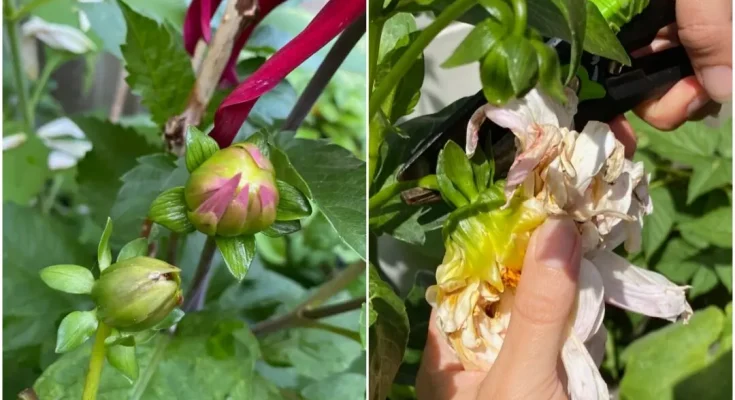



Can you be more specific about the content of your article? After reading it, I still have some doubts. Hope you can help me.